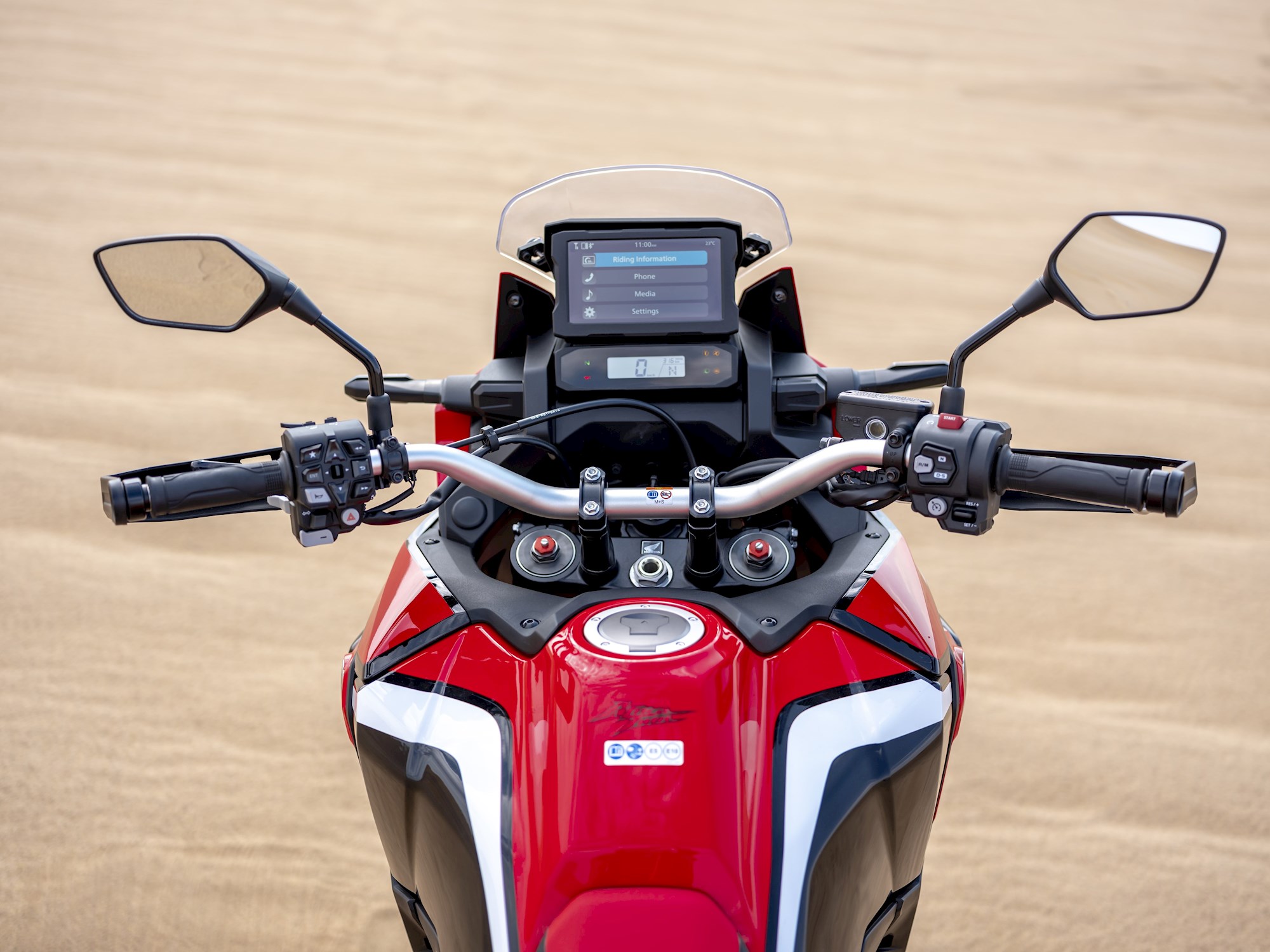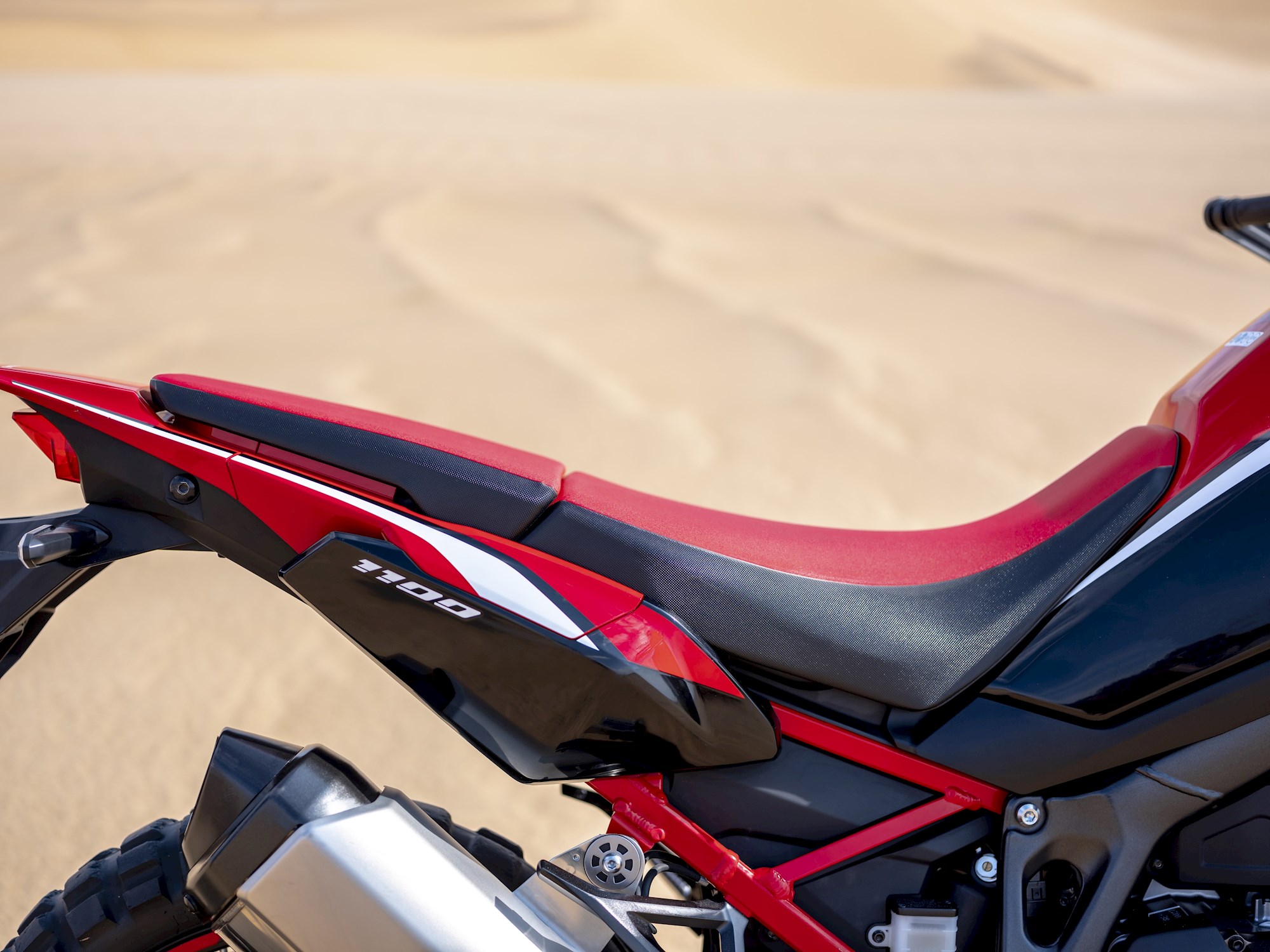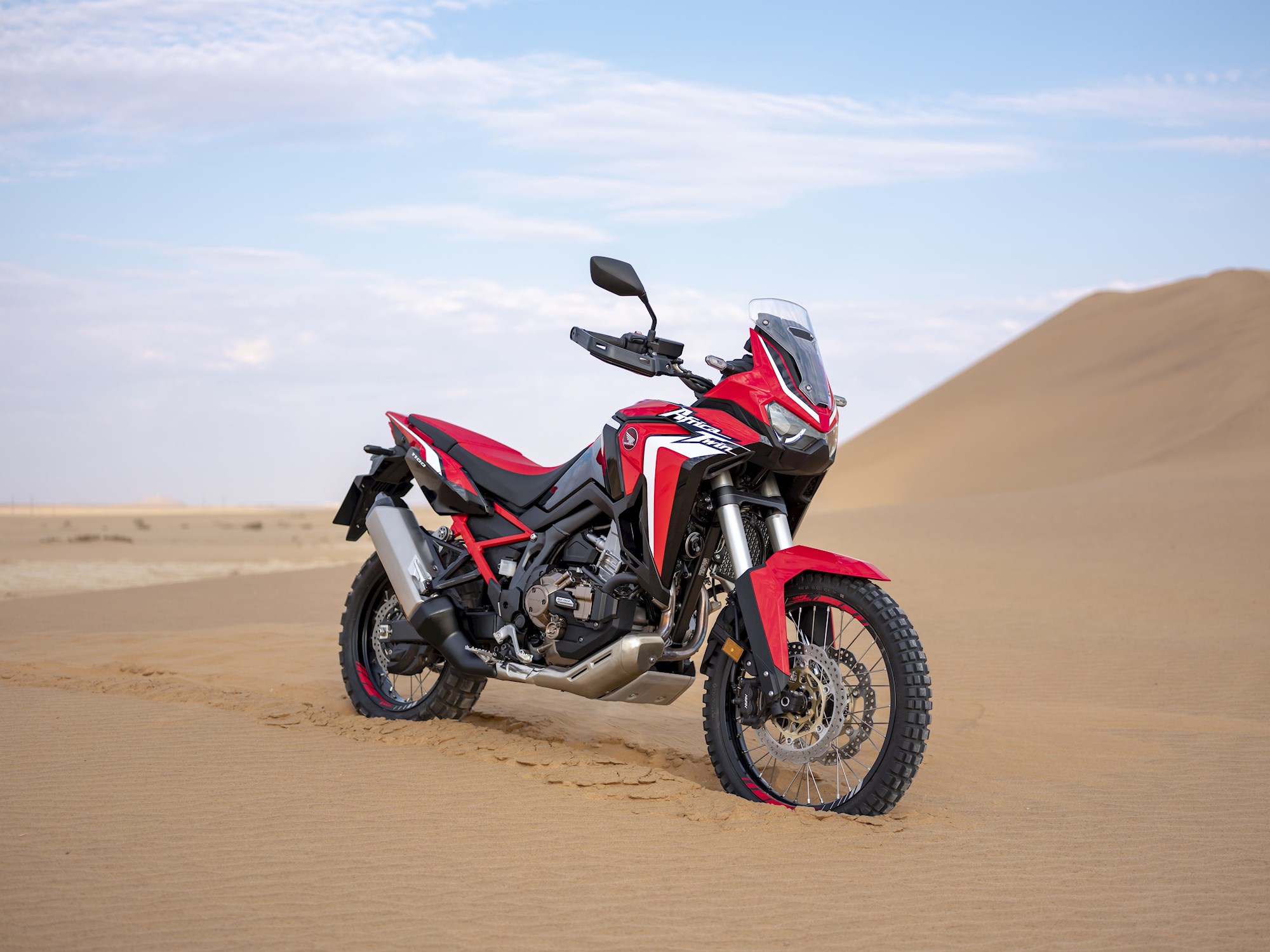It could be said the current generation of the Africa Twin was the original bike to buck the trend for massive 1200cc adventure motorcycles with its 998cc parallel-twin engine and sleek rider ergonomics.
While the parallel-twin engine configuration remains for 2020, Honda has boosted the engine size by 86cc to bring it up to 1084cc with power sitting at a claimed 75kW and 105Nm respectively.
Interestingly, while the bike’s engine size is bigger, the overall weight has dropped by a significant 6kg compared to the outgoing model.
Honda saved weight in the engine by moving to an aluminium cylinder sleeve, and along with other small weight savings in the transmission and elsewhere in the engine, the manual transmission engine tips the scales 2.5kg lighter (at 66.4kg) than the previous design, while the “automatic” DCT version is 2.2kg lighter at 74.9kg.
The main alteration to the chassis comes in the form of a new aluminium subframe, which is bolted rather than welded to the main section of the frame.
Honda says this is in response to owner feedback, as a crash off-road with damage to the subframe would necessitate an entirely new frame for the bike to go back on the road — an insurance write off in most books.

Seat height remains 850-870mm, ensuring the bike retains its accessibility to those shorter in stature, while the handlebars have been raised by 22.5mm to allow for more comfort while either standing or seated.
The new subframe is also quite the looker, with the base CRF1100L receiving a red-painted item that adds a strong visual element to the rear of the bike.
The frame itself has also been updated for improved handling characteristics, while the swingarm has been updated to a MotoX derived aluminium swingarm, which is both 500g lighter and more rigid.
The overall styling of the Africa Twin has also been refreshed with the headlight cowling becoming more distinctive in addition to the new set of twin LED headlights. Perhaps most strikingly, in addition to the sharp angles of the new bodywork, the windscreen has become smaller on the base CRF1100L, which visually widens the gap between the stronger off-road focus of the base bike against the touring focus of the Adventure Sports variant.

While the 2016 CRF1000L Africa Twin was an early adopter of many technologies, it was quickly overshadowed by the bling of the competition that followed it into the market.
One big step up in the electronics of the bike is a completely redesigned rider interface, which now includes a TFT display featuring Apple CarPlay as well as an LCD readout for speed and gear position. To date, Apple CarPlay is featured on only a handful of bikes, meaning the Africa Twin joins a select few to incorporate the technology in the two-wheeled market.
Honda hasn’t dropped the ball when it comes to safety aids either and has added a six-axis inertial measurement unit (IMU) allowing for the addition of new rider aids including wheelie control, cornering ABS, rear-lift control, DCT cornering detection and cornering headlights.

As part of the new electronics package, the Africa Twin now boasts six rider modes overall, with two user modes in addition to the pre-set tour, urban, gravel and off-road modes.
Tour mode features the most power available to the rider via the throttle-by-wire system, while gravel mode has the least amount of power.
Interestingly in gravel mode, the rear ABS cannot be switched off, instead the rider needs to select the more powerful off-road mode to do so.
The adventure sports variant offers the same chassis and electronics improvements over the outgoing bike and adds more long-haul ability and practicality over the base CRF1100L. Honda Motorcycles’ New Zealand distributor, Blue Wing Honda, says that while the bike has made its international debut it won’t be until next year that the bike arrives in local dealerships. Pricing has also yet to be announced.








